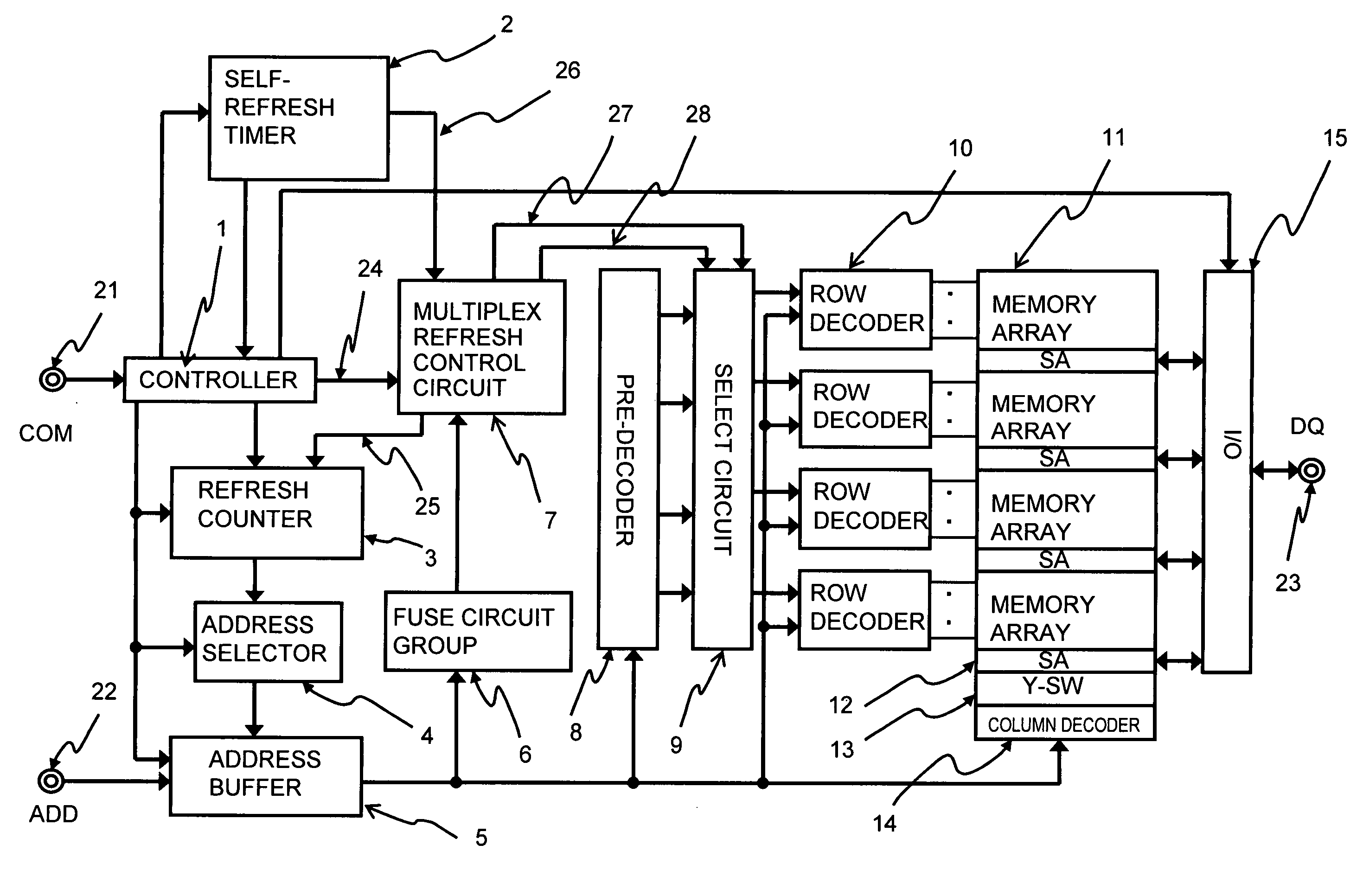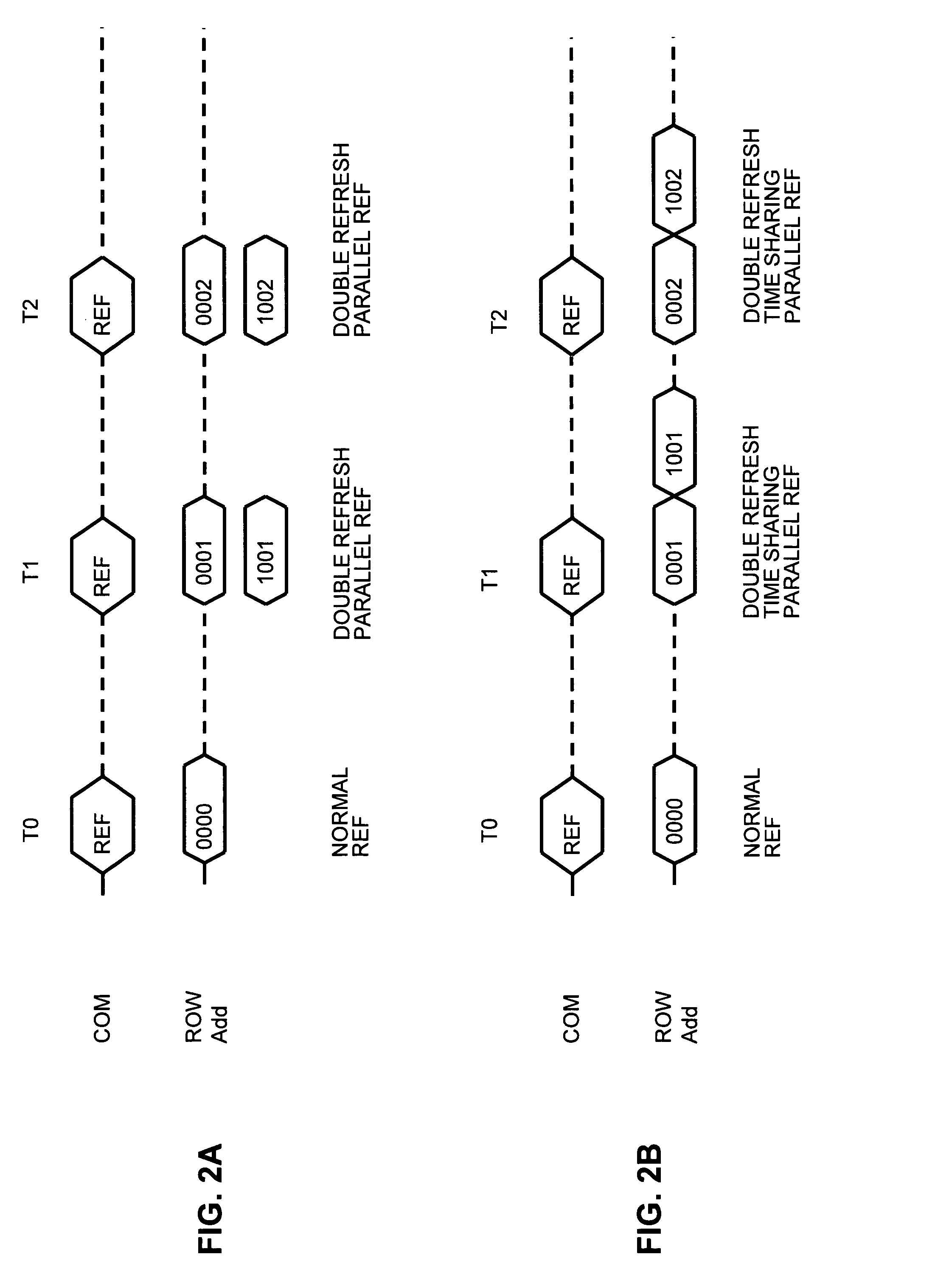Semiconductor device
- Summary
- Abstract
- Description
- Claims
- Application Information
AI Technical Summary
Benefits of technology
Problems solved by technology
Method used
Image
Examples
first embodiment
[0046] A first embodiment of the present invention will now be described with reference to FIGS. 1A, 1B and 5. In the present embodiment, double refresh is performed in distributed refresh, to save memory cells having short retention time. Distributed refresh is a manner of refresh in which a refresh command REF is input once at a maximum interval (tREFi). For example, the refresh commands are issued from a memory controller (outside the chip) every 7.8 μs. By comparison, a manner of refresh in which at least two refresh commands REF are input in succession at minimum intervals (tRFC) to perform continuous refresh is referred to as burst refresh. In burst refresh, the refresh commands are issued from a memory controller (outside the chip) every 105 ns, for example.
[0047] A multiplex refresh control circuit counts the number of refresh commands REF to identify distributed refresh or burst refresh as the manner of refresh. At this time, a self-refresh timer, which will be described l...
second embodiment
[0069] A second embodiment of the present invention will now be described with reference to FIGS. 2A, 2B and 5. In the present embodiment, double refresh is performed in burst refresh, to save memory cells having short retention time. FIG. 2A shows a timing chart of parallel refresh and FIG. 2 B shows a timing chart of time-sharing parallel refresh for double refresh performed within the same refresh cycle, according to the refresh method of the present embodiment. FIG. 5 is a schematic block diagram of the semiconductor device according to the present application. In FIG. 2, for the burst refresh, a plurality of refresh commands REF are consecutively input at minimum intervals (tRFC) within a maximum interval (tREFi) of 7.8 μs, to perform refresh operations. For the short period refresh, double refresh of the ½ period is carried out. The minimum interval (tRFC) may be 105 ns, for example, and up to eight refresh commands REF can be input in DDR2.
[0070] In FIG. 2A, refresh commands...
third embodiment
[0083] A third embodiment of the present invention will now be described with reference to FIGS. 3 and 5. In the present embodiment, in burst refresh, refresh commands (REF) are consecutively input at the minimum intervals (tRFC), and refresh is inserted into a next refresh cycle as double serial refresh. It is referred to as “double serial refresh” because the double refresh is inserted into the next refresh cycle. FIG. 3 shows a timing chart of the double serial refresh according to the present embodiment. FIG. 5 is a schematic block diagram of the semiconductor device according to the present application.
[0084] In the timing chart of FIG. 3, six refresh commands REF are input within the maximum interval (tREFi). At time T0, refresh command REF is input, and the word line of the first address “0000” is refreshed. At this time, the pair word line “1000” is not an object of double refresh, and thus, refresh is not carried out. At time T1, refresh command REF is input again, and the...
PUM
 Login to View More
Login to View More Abstract
Description
Claims
Application Information
 Login to View More
Login to View More - R&D
- Intellectual Property
- Life Sciences
- Materials
- Tech Scout
- Unparalleled Data Quality
- Higher Quality Content
- 60% Fewer Hallucinations
Browse by: Latest US Patents, China's latest patents, Technical Efficacy Thesaurus, Application Domain, Technology Topic, Popular Technical Reports.
© 2025 PatSnap. All rights reserved.Legal|Privacy policy|Modern Slavery Act Transparency Statement|Sitemap|About US| Contact US: help@patsnap.com



